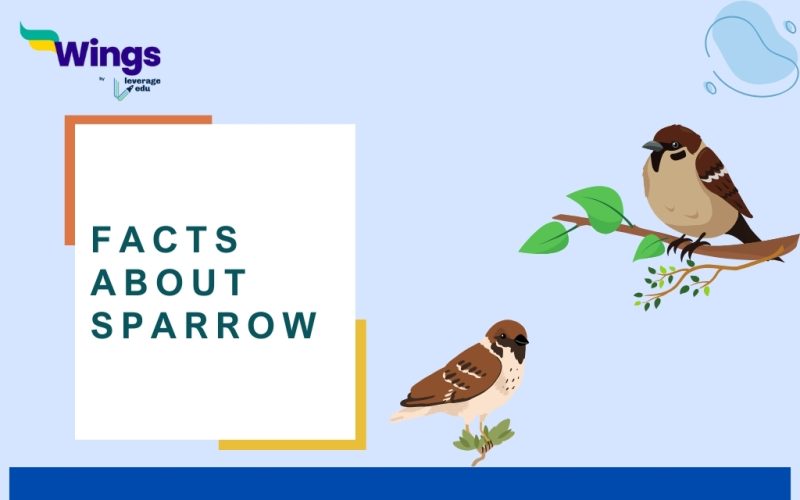House sparrows are one of the most commonly found birds. They are seen everywhere from parks and residence buildings to pooping on your cars. Many people spread rice and pulse grains on their terraces to invite sparrows and other birds and listen to their chirpy sounds every morning. However, over the years, factors such as the use of chemical pesticides and decreasing crop fields have put sparrows on the verge of extinction. Here are some interesting facts about sparrows to teach students about this bird species before it becomes endangered.
Amazing Fun Facts About Sparrow
1. Sparrows can be around 14 – 16 cm long.
2. They are characterized by a dull grey and brown colour.
3. Sparrows can fly at a fast speed of 38.5 km/hour and can reach up to 50 km/hour.
4. When nervous, house sparrows tend to flick their tails to ease out the tension.
5. They love to with dust and soil.
6. World Sparrow Day is celebrated every year on March 20 to highlight the importance of conserving and protecting them.
7. Sparrows prefer living in close association with human settlements. Therefore, they are rarely found in forests or desert areas.
8. They aim to raise at least 2-3 broods in a year.
9. They tend to lay 3-5 eggs on average.
10. Bot male and female sparrows take turns incubating the eggs for about 12 – 15 days.
11. Japan considers sparrows a symbol of love, loyalty, and friendship due to their friendly nature with humans.
12. Sparrows can live up to 4 to 5 years in the wild.
13. Sparrows can swim short distances in water to escape dangers or predators.
14. The population of sparrows around the world is constantly declining, gradually making them a soon-to-be endangered bird species.
15. Like pigeons, sparrows are also considered social birds.
16. In general, house sparrows are not migratory birds as they travel up to only a few kilometres during their lifetimes.
17. Sparrows are considered omnivorous as young chicks feed on small insects.
18. Cats, dogs, and snakes are some of the most common predators of house sparrows.
Hope you had fun reading these interesting facts about sparrows. If you like reading about facts, you can visit our interesting facts page to read more such blogs.
 One app for all your study abroad needs
One app for all your study abroad needs













